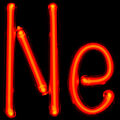Template:Selected anniversaries/January 19: Difference between revisions
No edit summary |
No edit summary |
||
| Line 1: | Line 1: | ||
<gallery> | <gallery> | ||
||1719: Joachim Tielke dies ... instrument maker. Pic search instruments: https://www.google.com/search?q=joachim+tielke | ||1719: Joachim Tielke dies ... instrument maker. Pic search instruments: https://www.google.com/search?q=joachim+tielke | ||
| Line 14: | Line 13: | ||
||1813: Henry Bessemer born ... engineer and businessman ... his steel-making process would become the most important technique for making steel in the nineteenth century for almost one hundred years. Pic. | ||1813: Henry Bessemer born ... engineer and businessman ... his steel-making process would become the most important technique for making steel in the nineteenth century for almost one hundred years. Pic. | ||
File:Alfred Clebsch.jpg|link=Alfred Clebsch (nonfiction)|1833: Mathematician and academic [[Alfred Clebsch (nonfiction)|Alfred Clebsch]] born. | File:Alfred Clebsch.jpg|link=Alfred Clebsch (nonfiction)|1833: Mathematician and academic [[Alfred Clebsch (nonfiction)|Alfred Clebsch]] born. Clebsch will make important contributions to algebraic geometry and invariant theory. | ||
||1835: Auguste Kerckhoffs born ... linguist and cryptographer who was professor of languages at the École des Hautes Études Commerciales in Paris in the late 19th century. Pic. | ||1835: Auguste Kerckhoffs born ... linguist and cryptographer who was professor of languages at the École des Hautes Études Commerciales in Paris in the late 19th century. Pic. | ||
| Line 29: | Line 28: | ||
File:Thomas Edison.jpg|link=Thomas Edison (nonfiction)|1883: The first electric lighting system employing overhead wires, built by [[Thomas Edison (nonfiction)|Thomas Edison]], begins service at Roselle, New Jersey. | File:Thomas Edison.jpg|link=Thomas Edison (nonfiction)|1883: The first electric lighting system employing overhead wires, built by [[Thomas Edison (nonfiction)|Thomas Edison]], begins service at Roselle, New Jersey. | ||
||1908: Aleksandr Gennadievich Kurosh born ... mathematician and theorist. Pic search: https://www.google.com/search?q=Aleksandr+Gennadievich+Kurosh | ||1908: Aleksandr Gennadievich Kurosh born ... mathematician and theorist. Pic search: https://www.google.com/search?q=Aleksandr+Gennadievich+Kurosh | ||
| Line 77: | Line 74: | ||
||1977: President Gerald Ford pardons Iva Toguri D'Aquino (a.k.a. "Tokyo Rose"). | ||1977: President Gerald Ford pardons Iva Toguri D'Aquino (a.k.a. "Tokyo Rose"). | ||
||1981: Iran hostage crisis: United States and Iranian officials sign an agreement to release 52 American hostages after 14 months of captivity. | ||1981: Iran hostage crisis: United States and Iranian officials sign an agreement to release 52 American hostages after 14 months of captivity. | ||
| Line 106: | Line 101: | ||
||2015: Karl H. Pribram dies ... professor of psychology and psychiatry at Stanford University and distinguished professor at Radford University. Board-certified as a neurosurgeon, Pribram did pioneering work on the definition of the limbic system, the relationship of the frontal cortex to the limbic system, the sensory-specific "association" cortex of the parietal and temporal lobes, and the classical motor cortex of the human brain. He worked with Karl Lashley at the Yerkes Primate Center of which he was to become director later. He was professor at Yale University for ten years and at Stanford University for thirty years. To the general public, Pribram is best known for his development of the holonomic brain model of cognitive function and his contribution to ongoing neurological research into memory, emotion, motivation and consciousness. Pic. | ||2015: Karl H. Pribram dies ... professor of psychology and psychiatry at Stanford University and distinguished professor at Radford University. Board-certified as a neurosurgeon, Pribram did pioneering work on the definition of the limbic system, the relationship of the frontal cortex to the limbic system, the sensory-specific "association" cortex of the parietal and temporal lobes, and the classical motor cortex of the human brain. He worked with Karl Lashley at the Yerkes Primate Center of which he was to become director later. He was professor at Yale University for ten years and at Stanford University for thirty years. To the general public, Pribram is best known for his development of the holonomic brain model of cognitive function and his contribution to ongoing neurological research into memory, emotion, motivation and consciousness. Pic. | ||
</gallery> | </gallery> | ||
Revision as of 20:50, 17 January 2022
1755: Physicist, mathematician, and astronomer Jean-Pierre Christin dies. He invented the Celsius thermometer.
1833: Mathematician and academic Alfred Clebsch born. Clebsch will make important contributions to algebraic geometry and invariant theory.
1851: Astronomer and academic Jacobus Kapteyn born. Kapteyn will conduct extensive studies of the Milky Way using photography and statistical methods to determine the motions and distribution of stars, discovering evidence for galactic rotation.
1878: Chemist and physicist Henri Victor Regnault dies. He was an early thermodynamicist, best known for his careful measurements of the thermal properties of gases, and for mentoring William Thomson in the late 1840s.
1883: The first electric lighting system employing overhead wires, built by Thomas Edison, begins service at Roselle, New Jersey.
1915: Georges Claude patents the neon discharge tube for use in advertising.
1917: Mathematician Graham Higman born. In mathematics, Higman will contribute to group theory. During the Second World War hill be a conscientious objector, working at the Meteorological Office in Northern Ireland and Gibraltar.
1937: Howard Hughes sets a new air record by flying from Los Angeles to New York City in 7 hours, 28 minutes, 25 seconds.
2015: Engineer and inventor Justin Capră dies. He designed fuel-efficient cars, unconventional engines, aircraft, and jet backpacks.








